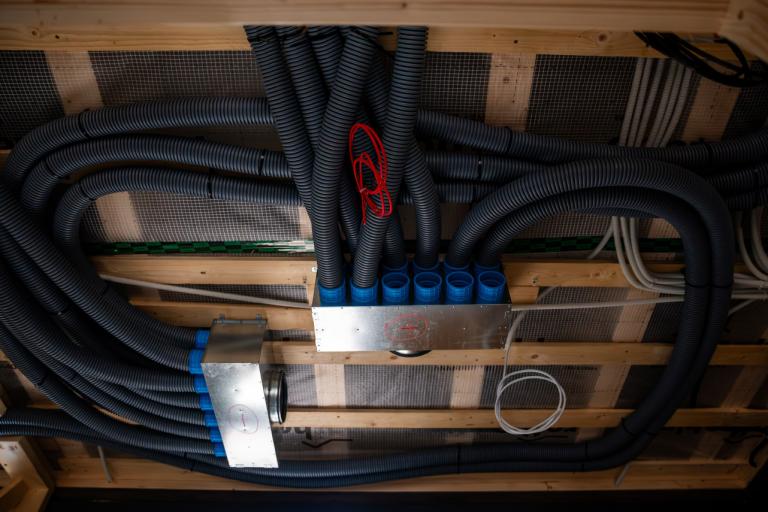We are improving our site by involving residents.
Help us continue to improve by giving your feedback
For bigger home retrofit projects, like aiming for net-zero carbon, you will need to produce an airtightness plan. This means creating an airtightness layer around your entire home to prevent air leaks.
Speak to a retrofit coordinator or designer who will give you a target for how airtight your house should be. This will include information on how tests are usually completed before and after the project to make sure it is achieved.
Some building standards, like EnerPhit, have specific airtightness goals.
When your home is well insulated and airtight, it also needs to maintain adequate ventilation, because less natural air will flow through. Airtightness should not lead to poor ventilation.
Air can still move using natural methods like windows and vents, or with mechanical systems, like extraction systems or Mechanical Ventilation with Heat Recovery (MVHR).
A controlled system helps air move in and out where needed, instead of leaking through gaps.

MVHR systems extract stale air from damp areas, like kitchens and bathrooms. Fresh pre-warmed air is then supplied to living spaces, recovering 80 to 90% of heat.
MVHR systems are often used in new builds or high-performance retrofitted homes as they enhance thermal efficiency and airtightness.
Installing MVHR is costly and complex, requiring adding ducts throughout the house. The system is suitcase-sized and needs space for ducts and exhausts.
Due to its intrusive nature, planning is essential for a successful installation, so combining MVHR works with other major retrofit renovations is advisable. Speak to a retrofit designer or coordinator for expert advice.
The Centre for Sustainable Energy provides useful advice about ventilation options and installation of MVHR systems.
Energy Saving Trust has a helpful guide to draught-proofing.
You may also need to consider the following building regulations:
Cost: MVHR systems – more than £10,000
Disruption: MVHR systems: high
NEW Help improve this site by giving feedback Show Hide
Send feedback directly to the content team using our website feedback form
You can also join our user research group to receive invites to activities and surveys to help shape future improvements to the site.